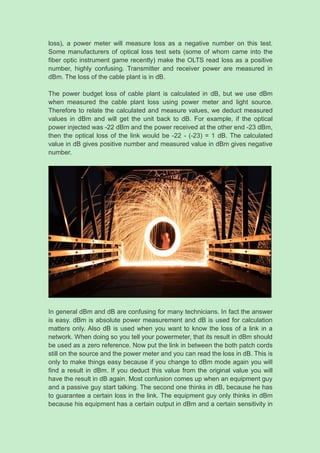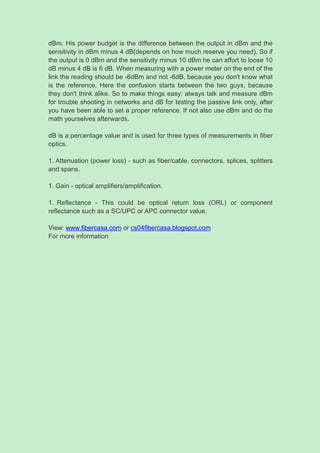dBm and dB are related but distinct units used to measure power in fiber optics. dBm refers to absolute power measured in milliwatts on a logarithmic scale, and is used to specify properties like laser output power and receiver sensitivity. dB refers to the ratio of input to output power and is used to measure losses in passive systems. To determine loss in dB, the input power in dBm is subtracted from the output power in dBm. While dBm is used for measurements, dB is used for loss calculations and specifying loss budgets. Technicians should use dBm for troubleshooting networks and dB for testing passive links.


